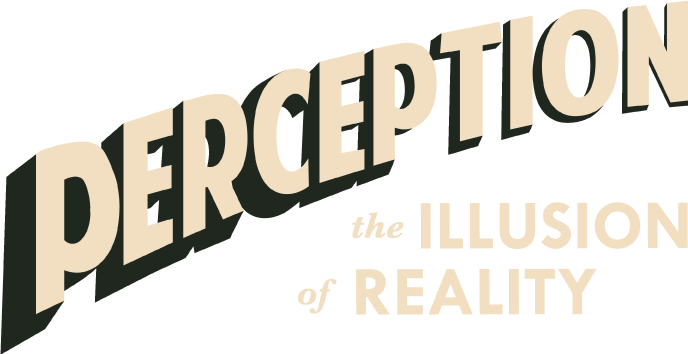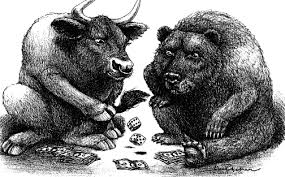The Hope
Hope plays an important part in our expectation, for hundreds of years mankind has behaved and reacted in a peculiar manner, once things turn sour, we tend to hope and pray for things to get better. Regardless of the situation, hope gives us the strength to hang on and look forward, it makes us to expect the impossible, it tells us a change of luck or a miracle may come our way saving us from these troubled times.
When one starts to leaves things on luck of chance, fate and begins to believe things will get better, then it’s a condition of hope and hope is your worst enemy when you are trading the markets and you are losing, cause hope may only make matters worse.
A condition of hope prevailed on the markets, they had started heading down, but a state of denial supported investors to continue their beliefs and investments on the way down.
Market reports, the media and everything else suggested a correction was underway and Financial Guru’s were on TV, advising everyone that a correction is underway and in no manner this should be read as a all-out collapse of the Internet Sector.
After all the markets had continued to gain year on year for the last decade and corrections then were ideally an opportunity to buy more stock, invest in new ventures and leverage on the lower prices.
The hope was the Feds who had supported previous down moves would ensure that the markets were tuned to the upside for ever, after all a prosperous investing crowd was good for the economy.
With this Investors continued to pour capital into private equity deals and large-scale public companies found valuations cheap to diversify their investments and create new revenue streams for their shareholders.
As the public companies struggled to build their own revenues, their diversification plans provided them with the hope of growth in technology, as technology and the Internet are here to stay and a switch now could help them save the day.
The real problem for the old economy companies was, the supply of goods and services they provided, they had either gone out of fashion or were not in demand anymore and their continuous supply was constantly depressing prices further and creating a deflationary environment in the economy where prices are headed only one way. Lower!
Most old economy companies took this opportunity of lowered equity valuations to diversify into technology, as technology companies continued to remain the darling for most investors and even on the way down, they constantly craved for more.
For the old economy companies this provided an ideal opportunity to sell out and revive defunct companies which had lost an interest with Investors, all they had to add was a good plan worth exploring, huge revenue projections and a management team which had some track record providing the basis for execution.
The problem was not many of these late stage aspiring technology companies understood much about technology or were innovative in any manner, they also hardly understood what had been created and delivered by many by most successful technopreneurs.
A phrase of Investing on concepts prevailed and even after six months since the March 2000 Nasdaq bust, capital could still be raised on ideas of innovation but it was starting to get difficult. Public companies armed with public money continued to soak up private technology companies that provided them with basis of justifications on their own corporate revenues.
Companies in debt, companies with cash flow issues and companies in general who were unable to secure capital via traditional means, one by one realized the opportunity of tapping capital from the stock markets since regulations and listing requirements were been eased. They changed their names, added a dot com, venture, or an “I’ and “e” to their names, jazzed up their offices and headed towards the public who were happy as long as they could pass on theirs buck to someone else. .
Not realizing the real game and noticing the fame. Wealth was been created on the basis of valuations. The public, governments and everyone else applauded technology companies and continued to create an environment deemed perfect for technopreneurs to set up operations.
Successful technopreneur’s, businessmen, and many others who were able to access billion dollar valuations and capital soon joined the bandwagon of setting up incubation companies. They were no longer satisfied with getting a piece of public listed companies and instead wanting to get closer to the action, incubation firms were springing up everywhere.
Traditional companies with experiences in construction and developments, used their excesses warehouses as incubation spaces, companies who had more office space then they could use, converted them into lab where startups could be breed and companies / individuals with nothing much to offer, went around as consultants offering strategic advice to the technopreneur in exchange for equity.
These were indeed the final days, but hope continued for technology and rasing capital became increasingly difficult. Believers of the stock market continued to hope for a turnaround in the stock market and continued to leverage on the way down. With money becaming increasingly hard to raise from stock sales, most turned to trading services and products for equity, for the dot com, its equity was still in demand, although not cash, but for services and those who accepted such deals, their hope was the value of todays equity is still discounted in comparison to future potential. At least this was the hope for everyone.
With the Nasdaq peak in place and constant falling market prices, some venture capital firms and institutional investors were among the first few to realise the changing tides and started to quickly look for alternatives to let go their babies in their portfolio’s.
Some looked for suckers in the financial times for names listed on the stock market, while others were quick to realize the tides had changed and pushed their start-ups for market share instead of revenues and a phrase of consolidation prevailed.
Technology companies merged and consolidated to produce the largest media house, largest data storage company and largest companies of all sort, for it looked good for the public markets, but all the consolidation and expansion required capital and the dollars had already been spend before even a single dime was made.
For there was hope and a sucker in the role of an Individual investor in the public markets and such was their hope, that they invested their life savings on expectations of capital returns a hundred fold.
While some had parted with their life long savings betting on technology, others had simply bet and lost their careers, although stable , they staked it for the fame that came with being into technology. Presidents, ceo’s, manager’s and many had simply resigned form their daily routines, all wanting to take their shot at technology and Internet ventures.
Some quit to setup the next big thing, while others were simply wanting to get out of the boring careers, the Internet had offered everyone something, for some it was cash, for others fame and for the rest a chance to prove their inherent entrepreneurial qualities of Innovation. The career changes that were occurring were indeed a very daring move for anyone, but all the basis of justification for doing so were there, the media had continued to trump success of technopreneurs and stories were abound of individuals risking their careers, marriages and whatever else to ante up in technology on this down move.
Stories were abound of how technology had changed the course of our life’s and how a simple farmer was able to boost productivity with the miracles created by technology, it was a daily occurrence in the local papers to read about how technology combined with biology were creating tissues to save mankind from mortality and how technology had boosted efficiency in the workplace.
But in all this the lesson was clear, time was short and plenty many hopefuls were waiting at the door, hoping to cash out of their tech investments, little did they know that the door had already closed.
With the pressure mounting and as the markets fell, investor’s appetite gradually disappeared and those who had already invested, started to feel the pain and complained, asking questions on how could they have invested in companies which looked so fantastic and yet had no revenues to prove their claims and for the companies who had no revenues, they justified by suggesting their innovation was unique and since so, it requires more capital to reach out to the masses, it requires more capital for education, marketing and in some cases completing product development.
With the markets collapsing, the downfall had squeezed all capital from the markets, investors and companies both were now looking for someone to blame their folly upon, as they both genuinely believed they had become part of a larger conspiracy theory, they increasingly started to look elsewhere to point their blame and claim for their pains.
For technopreneurs, they blamed their venture capital companies for not parting them with any more capital to burn, since it was the venture capital companies who originally preached them the ideas of developing market share instead of revenues, they had told their start-up’s to continue building market share via means of exposure and not focus on revenues, since a company with a greater exposure will be able to command higher premiums on the stock market.
The VC’s had advised their start-ups to execute the “GBF” strategy and to grow big fast and build up their first mover advantages, thinking this would allow the start-up to command significant market share first and then considerable amounts of revenues shall follow, a strategy also deployed by now defunct webvan and even used by Amazon.com in its earlier years.
Amazon.com and Webvan both companies famous for “GBF” strategy relied heavily on access of capital from the public markets and had a powerful affliction that have since killed many dot com’s as well as traditional companies.
GBF is a captivating idea for management, even after its predicament often called for the purchase of assets or businesses that could add value to the overall bottom line of an organization.
Webvan picked up a range of warehouses across America, networked by pickup trucks driven by courteous drivers and hoped for customer satisfaction from lowered prices and an efficient delivery system, Similarly for Amazon, who because of its bulk purchasing power and country wide supply chain hoped that they could provide customers with an overall value proposition.
Once the doors were closed, additional fund raising became extremely difficult and companies depending on them were quickly to feel the pain first, in fact GBF is a very capital-intensive business. Cut off the capital and these companies fall in trouble.
The hope for many was that the Bull Run in the public markets would continue and provide for additional capital as and when required. Corporate America and its efficient management teams had become complacent due to the excess liquidity that was once available and with the bubble now bust, the test of the best was on the cards. The VC’s who once preached first mover advantage now started to learn first mover also is the one to to first hit deal stand woes.
Customers, Investors, employees and partners were now getting upset and were losing their patience, they wanted to know what was happening to their companies, their investments they had made, the products they had purchased and on the companies that were dealing with.
With their loss now turning into Anger, they first turned their attention to the Federal Reserve Chairman, Mr Allan Greenspan for not doing enough and with questions why the federal reserve was slow in reviving the economy and couldn’t the FEDS use a miracle pill to make all the pain go away similarly to the manner the FEDS had acted in the past.
In one of the occasional state of the union address, when the Federal Board met with the government to discuss on going’s issues in the economy, one Senator took the opportunity to question the chairman, asking him, on whether he the Fed Chairman was responsible for the market fallout as he chose to raising interest rates during a time where economic growth was in question and by doing so the FEDS had drained the much required liquidity out of the system and made capital inaccessible for companies who depended on it for growth.
The senator like many others was feeling the pain from the fall in stock prices and when people feel the pain they often fail to remember the good times they had enjoyed due to the stock market rise over the last decade.
Everyone suddenly became upset with the Feds as this time around even actions of the FEDS had failed and the dot com crash was slowly exposing major flaws in the system. The FEDS even after aggressively cutting interest rates failed to provide any boost in stock market prices as well as a boost in lenders willing to borrow money. The financial markets and system was slowly beginning to get into a depression.
With little recourse, Investors started closely examining their portfolio companies, trying to find what was the real issue behind the lowered valuations and falling prices, they were searching now for a solution that would assist them in recovering part of the lost capital and provided them with some sort of justification for their folly.
They then turned towards Investment Bankers, Investment Houses and Market Analyst who had prided themselves with being one of the best money managers and analyst of all times, just before the crash. After all these could be the people who had benefited by selling stock to the public, they reckoned and these were the same people who had made bullish claims of Internet stocks that could never perform, their anger turned towards investment bankers for the reason that Investment bankers and their respective houses could have been working in tandem to push stock to the public suckers, knowing that now they had been suckered, they questioned practices of professionalism in organizations as such.
Lawsuits flew left, right and center against merchant bankers, their analysts and all those who had misled the public into buying now worthless technology companies.
In all of this, there was some hope that if someone could be found guilty then at least part of the lost capital could be recovered, Little did they know, billions had already been lost and the worst ride was only beginning, The danger was too many companies had pulled the tricks on investors and one by one they were been exposed by the public and in doing so they were only eroding further value off the stock market, which they wanted to recover.
For Technopreneurs, they were many, many were indeed hopefuls, hoping for the market to turn so that their investors and companies could go public, the truth was they were still hoping for a free public lunch while the window opportunity for it had long been closed.

Technopreneurship – The Successful Entrepreneur in the New Economy – Daniel Mankani. Published 2003. Pearson Education Asia – All rights, copyright reserved Daniel Mankani { ISBN0-13-046545-3 }
Chapter The (False) Hope >>> Technopreneurship-The Successful Entrepreneur In The New Economy.
LINKS
Disclaimer. http://ul3.com/L30qH
Back to the Beginning. http://ul3.com/aeVUG
BTAMSC – http://ul3.com/vAqdH
The Greed: http://ul3.com/pUDgd
The Ignorant, Zombies: http://ul3.com/PP8Ez
History: http://ul3.com/1rCFA
Chart Patterns: http://ul3.com/54VLV
Introduction to Technical Analysis. http://ul3.com/kcYCE
Writings.
INTRODUCTION TO FINANCIAL MARKETS & TRADING OPPORTUNITIES IN COMMODITY, CURRENCY, & FINANCIAL FUTURES. http://ul3.com/dAFWj
Revolutionary Transformation Ongoing. http://ul3.com/kcYCE
– Global Economic Collapse January 18, 2016
And Why;
Technopreneurship Development – Daniel Mankani. http://ul3.com/kcYCE
– Published Sep 2003. Pearson Education Asia











